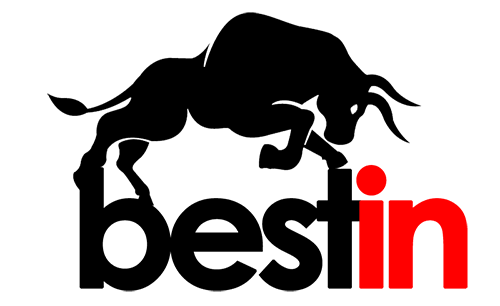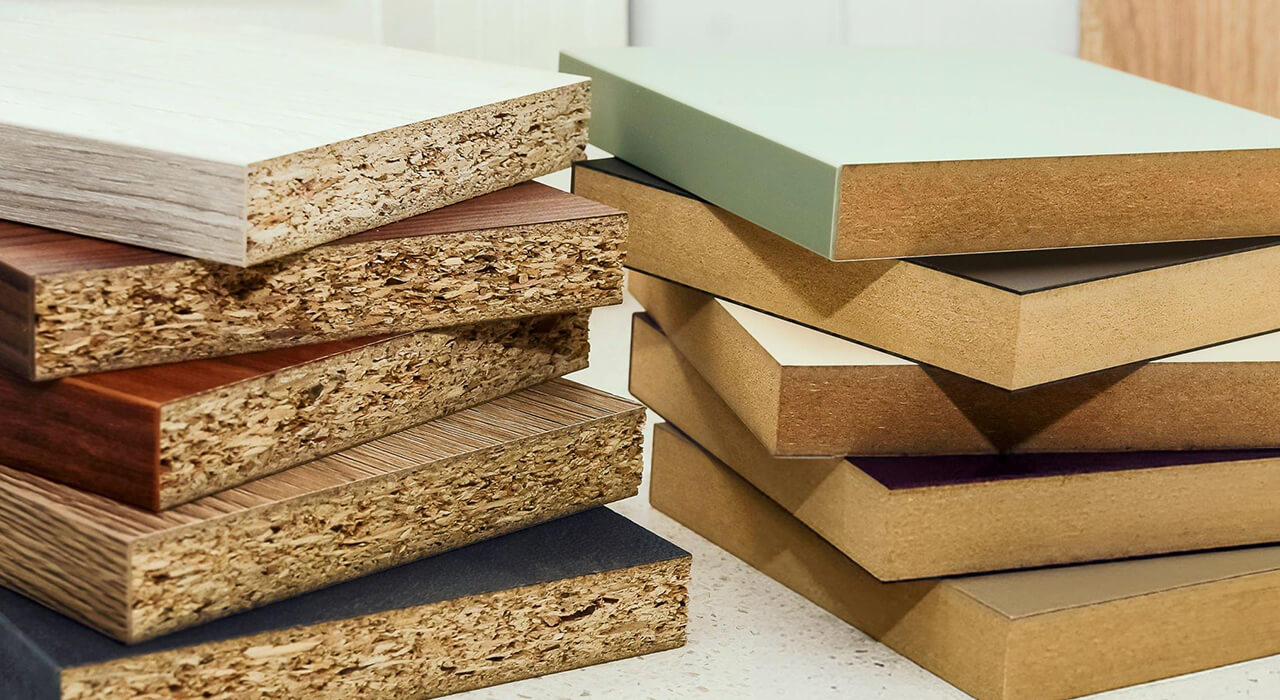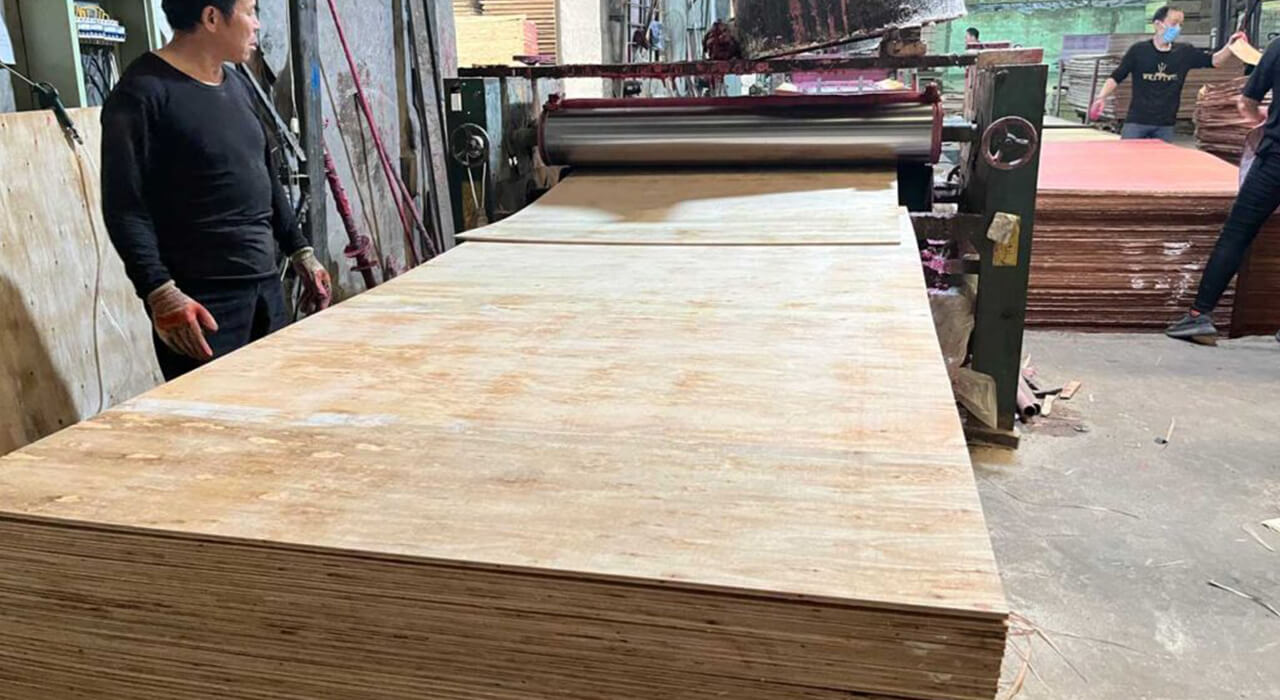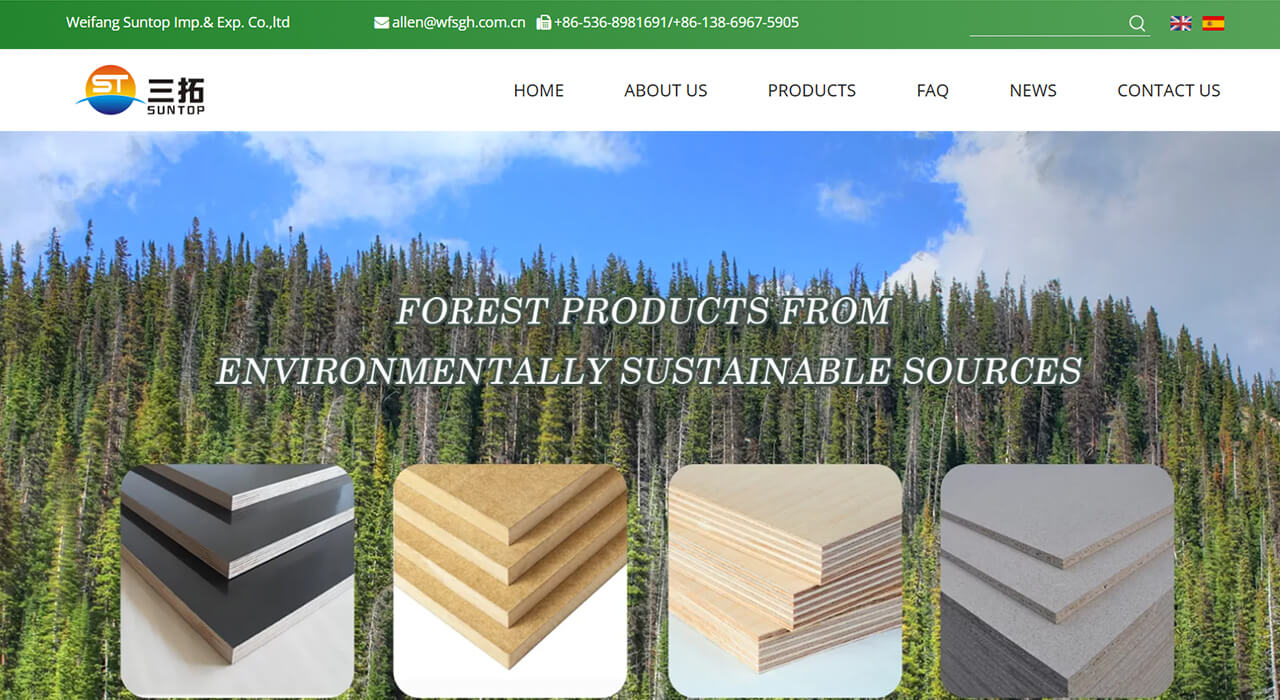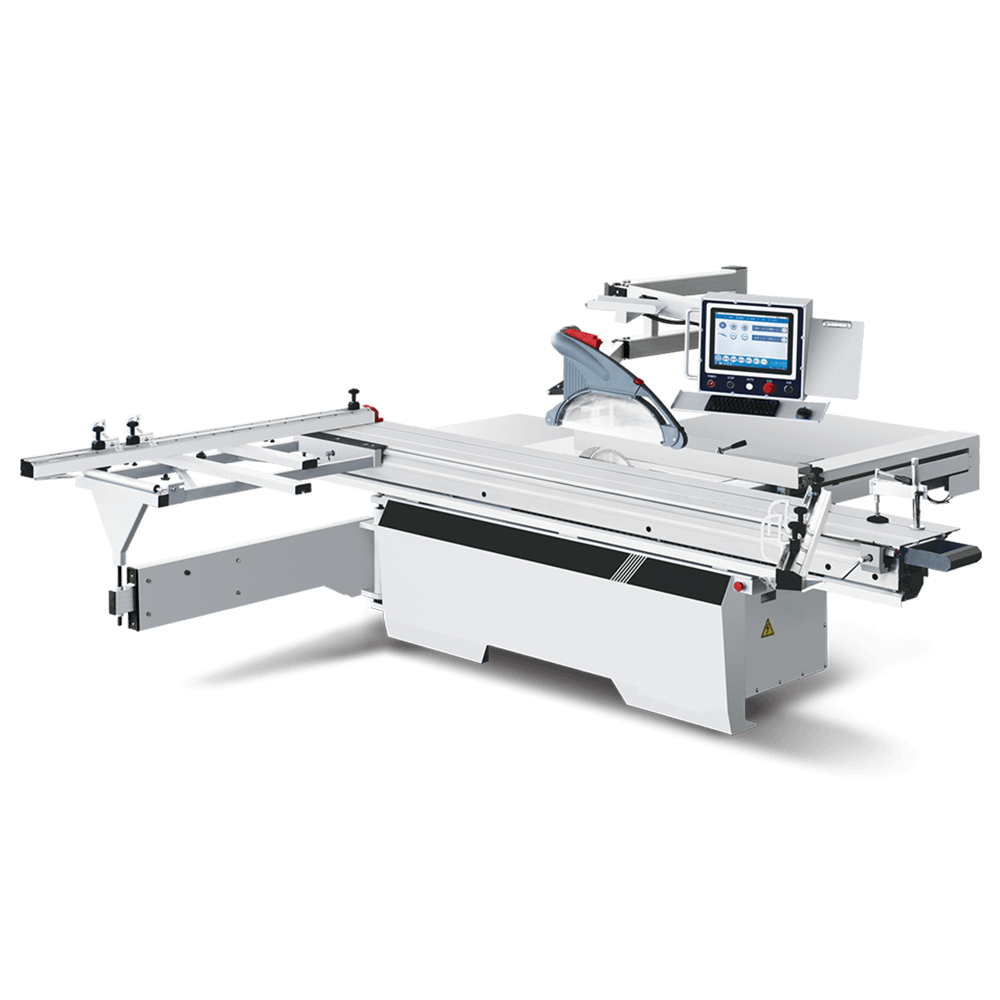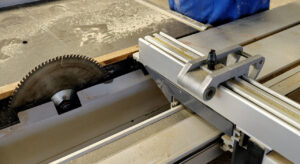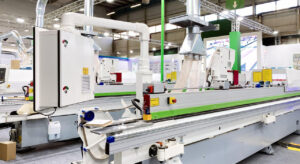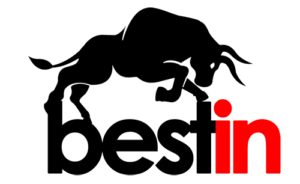In recent years, China has become a leading supplier of MDF for furniture, combining low prices with massive production capacity.
In this article, we will deep into how to find a good MDF supplier in China. Let’s Go.
Featured Resource
Table of Contents
1. What Is MDF Board?
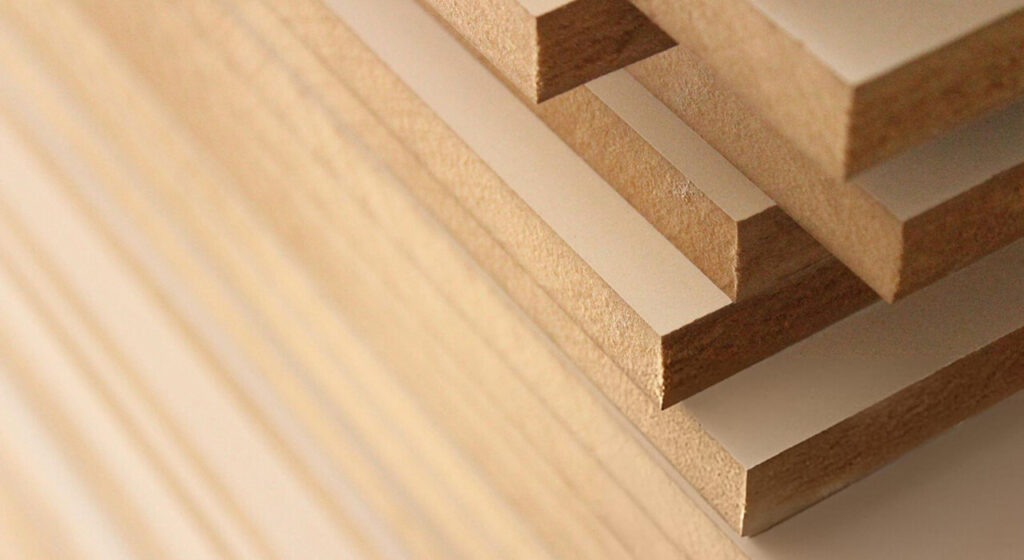
For furniture manufacturers, medium-density fiberboard (MDF) is an engineered wood panel made from wood fibers bonded with urea-formaldehyde resin under heat and pressure, forming a stable, uniform board.
Typically, a small amount of wax is injected to improve moisture resistance, and the resin cures to bind the fibers together under heat.
MDF’s consistent density (around 600–800 kg/m³) and smooth surface allow for precise cutting, carving, and finishing – there are no knots or grain patterns to contend with, unlike solid wood.
This uniformity makes MDF easy to machine and finish. For example, the smooth MDF surface readily accepts veneers, paints, or laminate coatings, enabling manufacturers to achieve high-end finishes on otherwise affordable panels.
Why MDF matters: For furniture makers, MDF offers a balance of durability and cost. It is generally more stable than solid wood, resisting warping and cracking with changes in humidity.
In cabinetry and millwork, MDF doors and panels remain flat over time, even in moist environments. At typical densities (MOR ~40 MPa), MDF is stronger than cheaper particleboard, making it suitable for shelves and structural parts.
These attributes – along with a lower price point – make MDF a cornerstone material for flat-pack and custom furniture alike. It is also widely used for decorative moldings and trim profiles, where its fine finish and workability allow intricate designs.
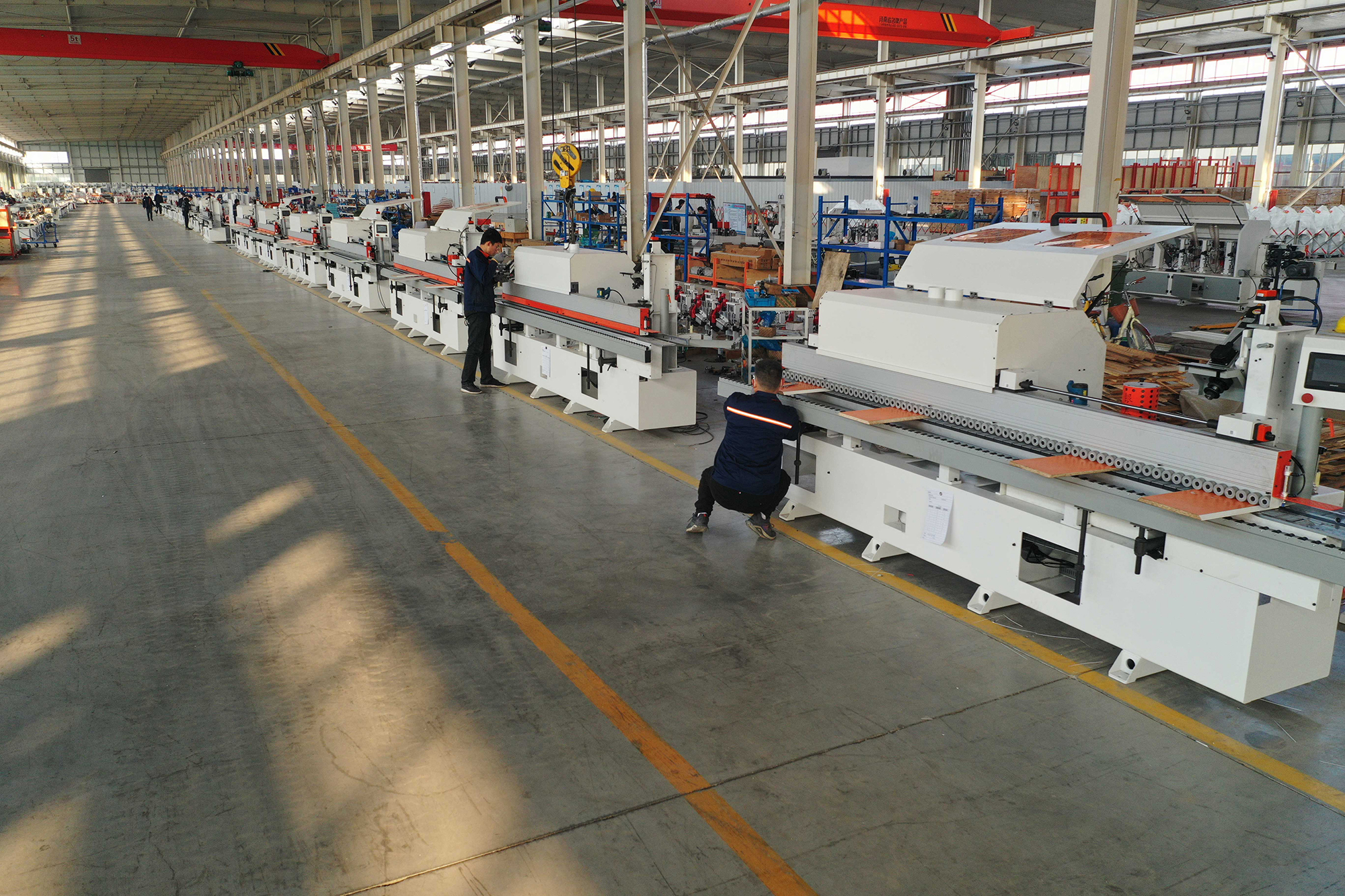
2. Why China is a Top Source for MDF Boards?
China has emerged as the world’s largest producer of MDF. In fact, China’s MDF output in 2020 was about 53.5 million m³ – by far the highest of any country. Such scale translates into lower unit costs.
Market data show MDF prices in China at roughly $559 per metric ton in late 2023, versus about $964/ton in Germany. This cost advantage stems from China’s abundant raw materials (both plantation wood and recycled fiber), huge factories, and automated production lines.
Large-volume orders can be filled efficiently (a sourcing guide notes that China’s factories have “efficient production… advanced machinery and abundant raw materials”) and many mills are flexible on custom specifications.
Chinese MDF producers have also upgraded quality and technology. Modern Chinese plants use advanced defibering and drying equipment.
For example, one shandong MDF board factory employs an 80-meter-long continuous press (a world record) to produce 630,000 m³ of MDF annually.
State-of-the-art machines (often built in partnership with German or Italian firms) ensure consistent panel density and low defect rates.
As a result, Chinese MDF now meets or exceeds many international standards. By tapping into China’s massive capacity and improved technology, furniture manufacturers can source MDF board from China at a much lower cost, while still obtaining good quality.
3. How To Find Good MDF Board Supplier?
Below are key factors to consider when evaluating Chinese MDF board suppliers:
3.1. Supplier Vetting and Reputation
3.1.1. Find
Carefully vet suppliers before placing large orders. Use industry trade shows (Canton Fair, Woodworking show) and online platforms (Alibaba, Global Sources, Made-in-China) to find manufacturers of MDF and panels.
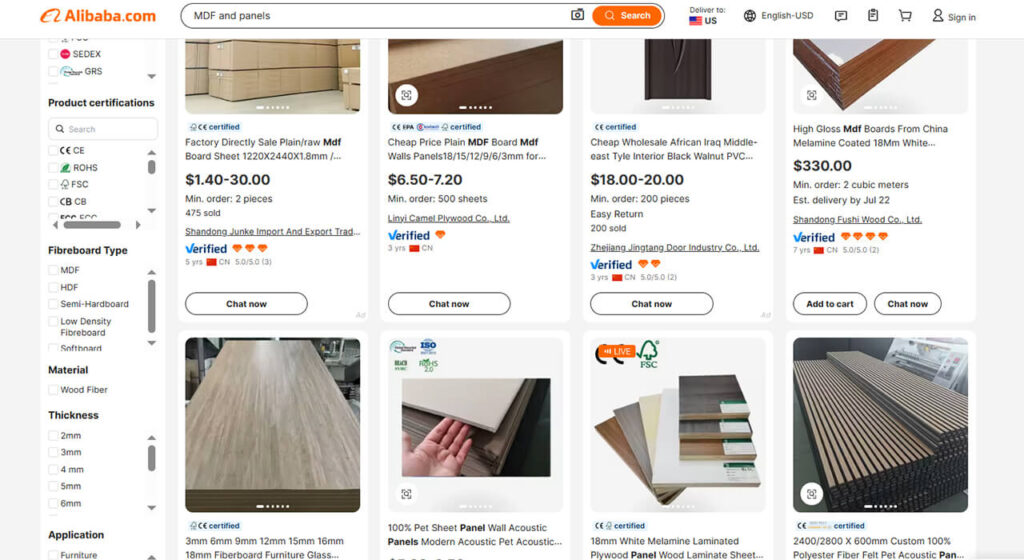
3.1.2. Verify
Once you have candidates, verify their credentials: check that the company is legally registered and has export approval. Ask about production capacity (annual output, number of lines) – small workshops may not scale to big orders.
3.1.3. Certificate
Confirm they hold key certifications (e.g. ISO 9001 quality management, ISO 14001 environmental) or national licenses. Look for evidence of export experience: a factory that regularly ships to Europe or North America is more likely to understand stringent quality expectations.
3.1.4. Inspection
Request client references or case studies from global buyers. If possible, visit the factory or arrange a detailed virtual tour to inspect equipment, material storage, and finished products. If an on-site visit is not feasible, engage a reputable third-party auditor (SGS, TUV, Bureau Veritas, etc.) to perform a factory inspection.
Reliable suppliers should welcome audits and transparently share information on raw materials (virgin vs. recycled fiber) and adhesive formulas.
In short, conduct a comprehensive evaluation of their manufacturing capabilities, certifications, and track record. Remember, the cheapest quote is rarely the best deal: prioritize consistency, communication, and proven performance.
3.2. Quality and Certification Standards
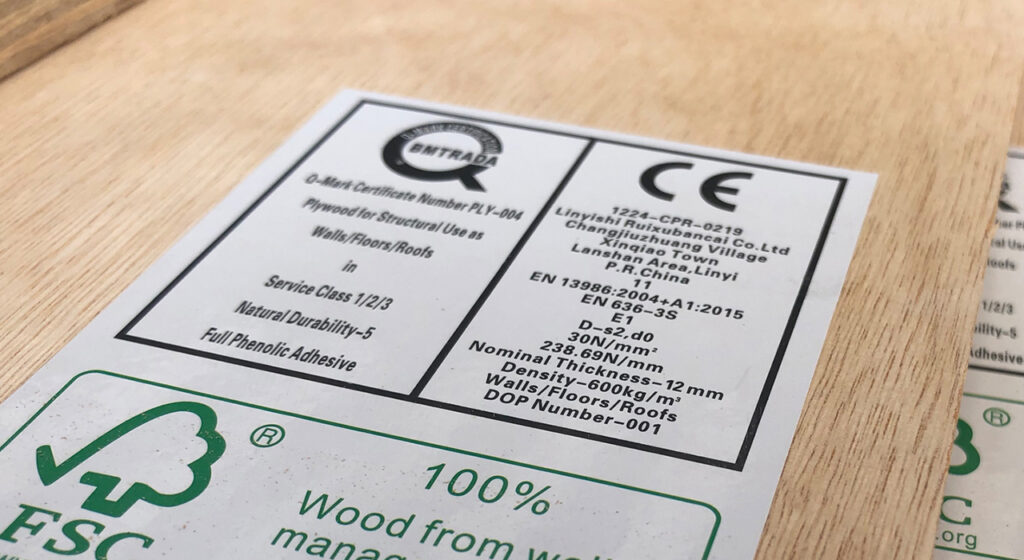
Verify that the MDF meets relevant quality standards.
Formaldehyde emissions are critical: Chinese MDF is graded E0, E1 or E2 under national standard GB18580.
By regulation, all manufactured boards must meet at least E1 or E2 (E1 ≤ 1.5 mg/L, E2 ≤ 5.0 mg/L).
Many suppliers also offer the stricter E0 grade (≤ 0.5 mg/L) for export markets. For the US market, ensure CARB Phase II (EPA/TSCA Title VI) compliance – formaldehyde must not exceed 0.11 ppm.
For Europe, CE marking (EN 13986) or UKCA documentation may be required. Also check for ISO 9001 (quality) or 14001 (environment) certificates, which indicate a formal management system.
Sustainable forestry labels like FSC or PEFC on the product or packing show that the wood came from responsibly-managed forests.
Finally, ask suppliers for independent lab test reports for each batch: emission (desiccator or gas analysis), moisture content, and any flame-retardant or antimicrobial additives.
3.3. Thickness, Dimensions, and Surface
Dimensions: Chinese mills offer standard MDF sheet sizes (1220×2440 mm, 4×8ft) and larger (e.g. 1525×3050 mm, 5×10ft). Some factories can even produce jumbo panels (up to ~9×3 m) if you have large cutting equipment.
Specify the exact dimensions you need (length, width) and order allowances. Specify thickness in millimeters (e.g. 3, 5, 12, 18, 25 mm are common) or inches (¼”, ½”, ¾”). Demand strict thickness tolerances (±0.3 mm or better) and flatness specifications.
Note that very thick boards (>25 mm) may be more expensive or limited in factory capacity.
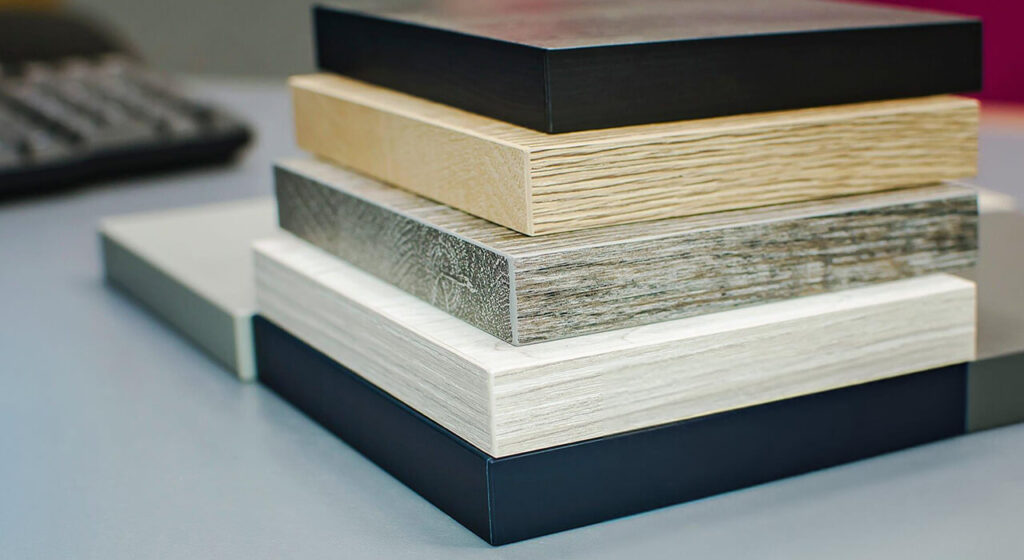
Surface Finish: Decide if you need plain or pre-finished boards. Plain MDF has a light brown surface ready for paint or lamination. If you want decorative panels, ask for melamine-faced MDF (MFC) or pre-laminated (PVC/PET) MDF.
Many Chinese suppliers offer melamine laminates in woodgrain or solid colors applied under heat – this yields ready-to-assemble cabinet parts. Alternatively, MDF can be delivered with a PVC film or UV-cured paint coating. The smooth, flat MDF surface easily accepts veneers or foil lamination.
Discuss Surface Quality: if you plan to paint in-house, the boards should be finely sanded (often labeled “C-sanded” or “DC-sanded” on one or both faces). If wallpaper or foil will cover the panels, a standard finish may suffice. Always clarify the exact surface preparation and finishing the supplier will provide.
3.4. Moisture Resistance and Special Grades
Standard MDF will swell if exposed to high humidity. For kitchens, bathrooms or outdoor furniture, specify Moisture-Resistant (MR) MDF.
Chinese MR-MDF is often tinted green and is bonded with waterproof or enhanced-resin (sometimes melamine-modified Urea or Phenol UF). Confirm the performance: good MR-MDF will not deform in short-term water tests.
If fire resistance is needed (e.g. in hotels), some mills offer Fire-Retardant (FR) MDF, which contains additives like alumino-phosphate – however, this can affect machining and is only sometimes cost-effective.
Always ask for the technical sheet of any specialty board. Keep in mind that even MR or FR MDF may have slightly different machining properties (harder glue line, dust) and check that it still meets emissions specs.
3.5. Formaldehyde Emissions and Safety
Formaldehyde emissions must be tightly controlled. MDF commonly uses urea-formaldehyde (UF) resin, which emits gas.
Verify the emission class: only accept boards rated E0 or E1 for furniture. Under U.S. regulations, fiberboards must meet ≤0.11 ppm free formaldehyde.
EU has a similar threshold (~0.1%). Many Chinese suppliers will provide TSCA/CARB certificates. High-grade suppliers use MDI (no formaldehyde) or paraffin additives to reduce emissions.
Always request the latest test reports, and consider insisting on an independent test (e.g. desiccator method) for each shipment. Even when buying E1, do not neglect ventilation and precautions when cutting large quantities of MDF.

4. Recommend MDF Board Supplier
There are some board supplier in China for your reference
4.1. Weifang Suntop Imp&Exp.Co.,Ltd
Location: Linyi, Shandong Province
Highlights:
- Offers furniture-grade MDF in raw, UV-coated, melamine‐faced, and veneer-faced variants.
- Competitive pricing for high-volume orders (MOQ from 100 sheets).
- CARB & E0/E1 compliant; CE-certified packaging and ISPM-15 fumigated pallets.
- Strong export focus with turnkey container loading and door-to-door logistics.
Website: https://www.wfsuntop.com
4.2. Dongguan Tongli Timber Products Co., Ltd.
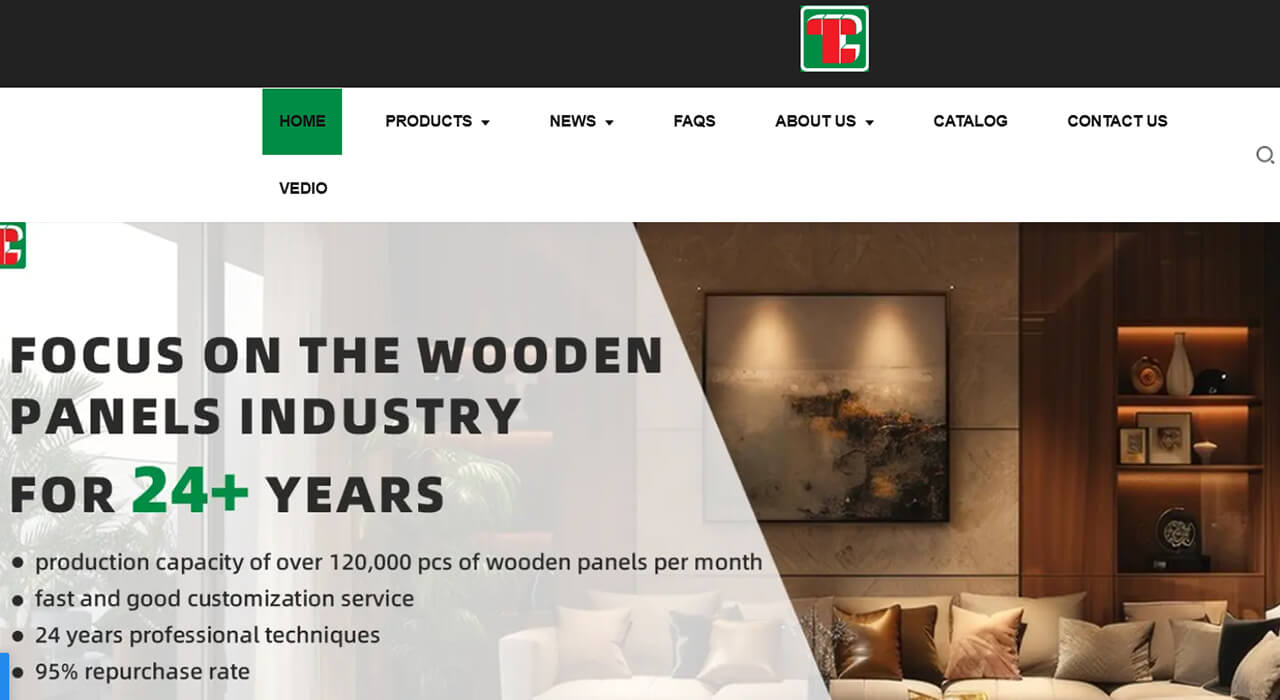
Location: Dongguan, Guangdong Province
Highlights:
- Offers plain MDF, melamine-faced MDF (MFC), PVC-laminated and UV-coated boards.
- In-house production with state-of-the-art hot-press lines and automated finishing.
- ISO 9001 & ISO 14001 certified; full CARB Phase II / TSCA Title VI compliance for US market.
- Exports to over 50 countries; capacity > 1 million m²/month.
4.3. Guangxi Forestry Industry Import & Export Trading Co., Ltd
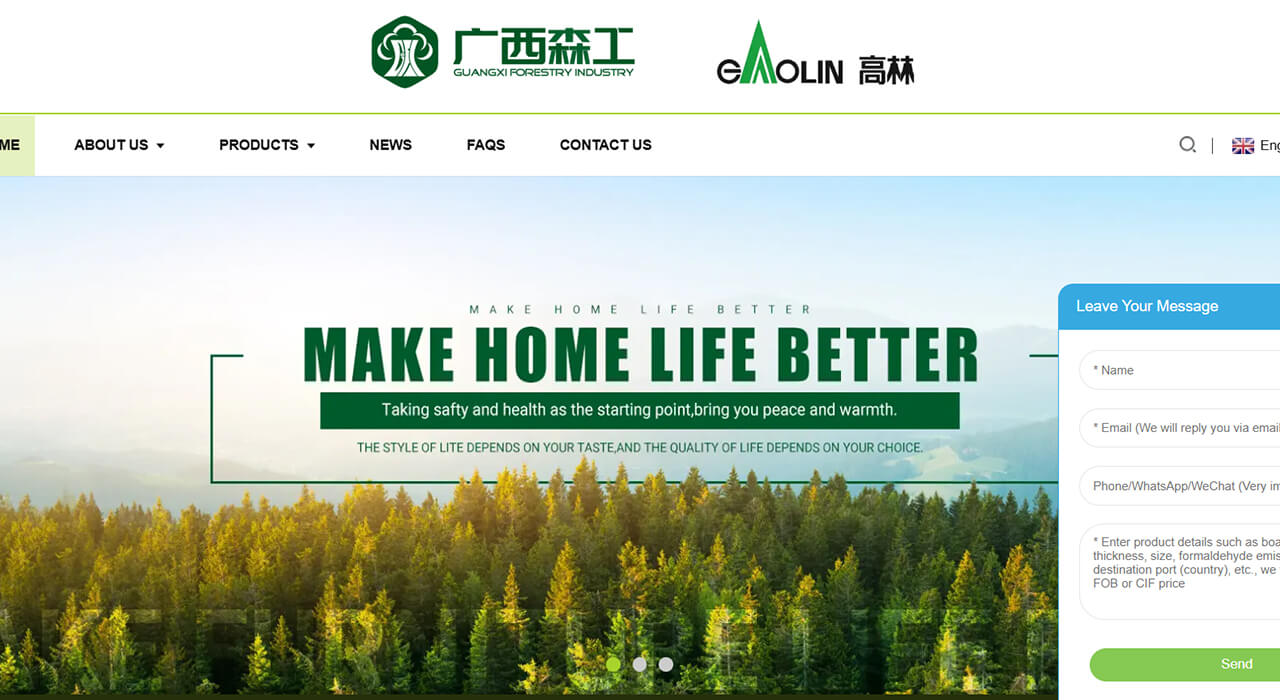
Location: Nanning, Guangxi Province
Highlights:
- Specializes in E0/E1 grade MDF and specialty panels (MR-MDF, FR-MDF).
- Holds FSC® Chain-of-Custody and CE/UKCA certifications (EN 13986).
- Owns vertically integrated fiberboard mills—ensures traceable raw material sourcing.
- Exports primarily to Europe and Australia; annual capacity ~ 500,000 m³.
4.4. Linyi Leberg International Trade Co., Ltd
Location: Linyi, Shandong Province
Highlights:
- Supplies plain MDF, HDF, melamine-faced MDF, and HPL panels.
- ODM/OEM capabilities: custom dimensions, thickness tolerances ±0.2 mm.
- E1/E0 grades with independent SGS test reports; optional FSC/PEFC certification.
- Fast delivery: bulk orders shipped within 15 working days.
4.5. Yalong Wood (Dare Group)

Location: Suizhou, Hubei Province
Highlights:
- Part of Dare Group—China’s largest MDF producer, capacity > 1.2 million m³/year.
- Produces E0, E1, MR, and HMR grades; specializes in flooring panels and decorative MDF.
- Advanced continuous pressing technology (80 m press lines) for high density consistency.
- CARB Phase II / TSCA Title VI, CE marking, FSC, and PEFC certified.
5. Woodworking and Panel Processing Machinery
Turning raw MDF into furniture parts requires specialized panel processing machines. Key equipment in a workshop includes:
5.1. Panel Saws (Cutting Machines)
Sliding table saws or beam saws for ripping and cross-cutting MDF sheets into cabinet sides, shelves, and panels. Modern saws (like Bestin’s) are “built for accuracy and speed, handling large wood panels with ease”. They use fine-tooth carbide blades and digital readouts to minimize waste.
5.2. CNC Routers

Multi-axis CNC machines drill holes, mill grooves, and cut complex shapes. A 3- or 5-axis router can execute cabinet door profiles, hinge and dowel holes, and decorative edges with high precision. CNCs increase automation: once programs are loaded, they can produce thousands of identical parts.
5.3. Edge Banding Machines

After cutting, MDF edges are unfinished and must be sealed. Automated banders apply PVC/ABS tape or wood veneer tape along edges, trimming excess and buffing smooth. Bestin’s edgebanders “provide seamless, high-quality edge finishes” on MDF. Some models handle both single- and double-sided banding with pre-milling and corner-rounding.
5.4. Drilling/Boring Machines
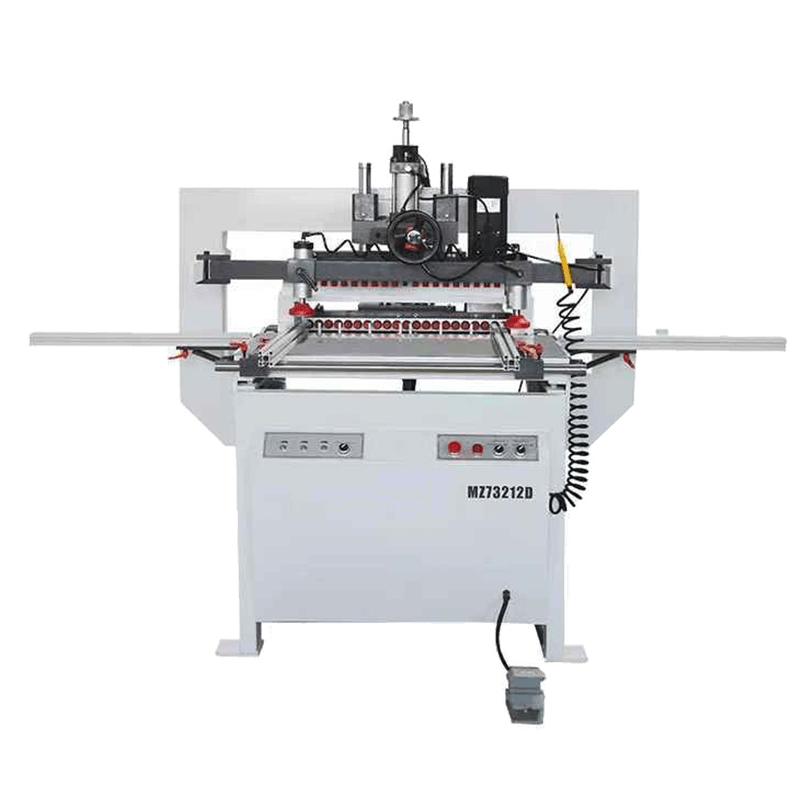
Specialized CNC drilling or boring centers create fastener holes (for cam locks, dowels, hinge cups) in one operation. These machines can drill tens of holes per minute in cabinetry panels. They often tie into the CNC workflow for maximum efficiency.
5.5. Sanding and Calibrating
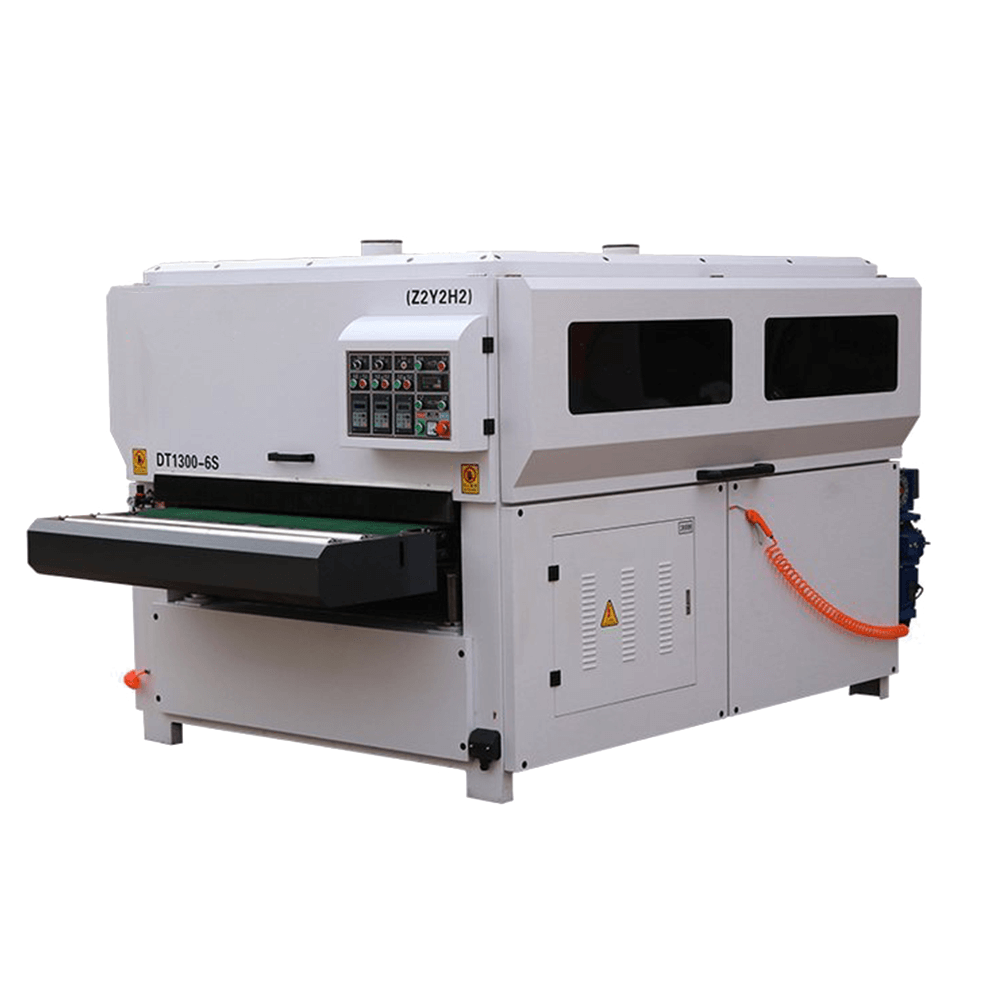
Wide-belt sanders or panel calibrators smooth the MDF surface and ensure uniform thickness before assembly. These finishing machines remove minor surface roughness and edge chipping from cutting.
Each woodworking machine must handle MDF’s fine dust and hardness.
A dust extraction system is mandatory – MDF cutting creates very fine wood-and-resin dust, a known respiratory hazard.
All machines should have local dust collectors and shop-wide ventilation. Proper PPE (masks, filters) is also essential. Using the right combination of panel processing machines (saws, routers, banders, etc.) transforms raw MDF sheets into furniture components quickly and consistently.
Chinese machinery makers, including Bestin Group, supply these industrial woodworking machines with CE certification and modern controls, often aiming for Industry 4.0 automation.

6. Bestin Group: Advanced Machinery for MDF Furniture Manufacturing
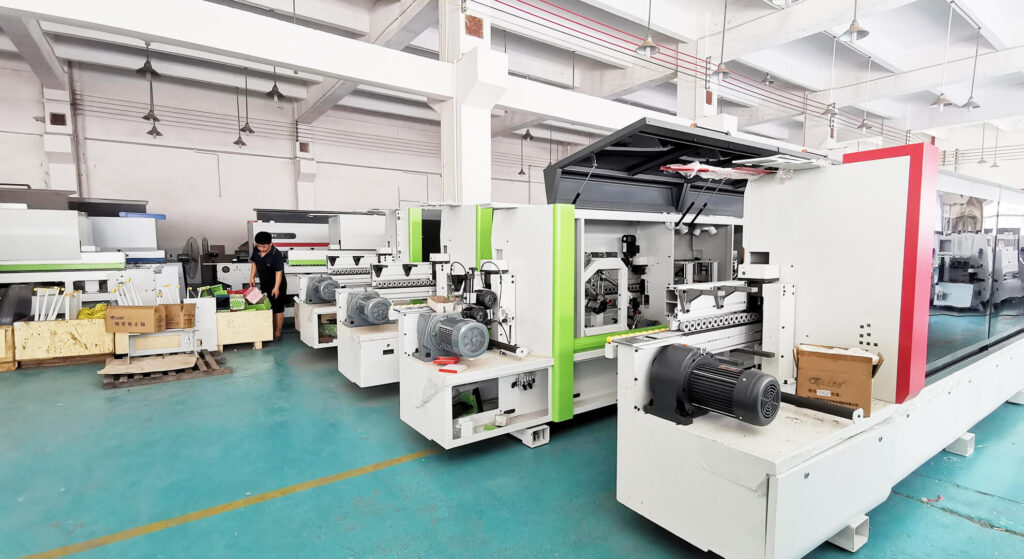
Bestin Group is a Chinese woodworking machine manufacturer that caters to furniture factories of all sizes. They emphasize that their range covers “Cutting Machines, Edge Banding Machines, CNC Nesting Machines and other machines” essential for MDF processing.
For cutting, Bestin’s industrial panel saws are praised for precision and speed, allowing rapid breakdown of jumbo boards. Their automatic edge banding machines apply tape to MDF edges with minimal glue waste, producing “seamless, high-quality edge finishes” on cabinet parts.
Bestin’s CNC routers deliver “exceptional precision” in shaping and drilling MDF panels, enabling complex door designs and joinery holes in one go.
Bestin’s machines are fully CE-certified and designed with the latest controls. The company highlights energy-efficient servo drives and PLC-based automation on its website.
Their equipment even features Industry 4.0 connectivity, meaning it can be networked and monitored for optimum factory throughput.
After sales, Bestin provides training, spare parts, and remote support to help customers ramp up production. By pairing Chinese MDF boards with Bestin’s modern machinery, furniture manufacturers can achieve automated, high-volume production lines with consistent quality.
7. Evaluating Suppliers, Logistics and Documentation
When you’ve chosen a supplier, pay attention to practical import details.
First, ensure clear contract terms: specify Incoterms (e.g. FOB factory or CIF destination), delivery schedule, and payment (letter of credit, T/T). A letter of credit at sight, for example, protects both parties by linking payment to shipment documents.
Confirm the exporter issues a proper Commercial Invoice and Packing List detailing board dimensions, quantities, unit prices and total value. The wood panel HS code (often 4411.14 for MDF) should be clearly indicated on documents.
Also obtain a Certificate of Origin if needed for tariff preferences, and a Fumigation Certificate for any wooden crating (China’s pallets comply with ISPM-15).
Logistics-wise, MDF is usually shipped in sealed bundles on pallets. Typical orders travel by 20ft or 40ft container. Work with a freight forwarder experienced in wood products.
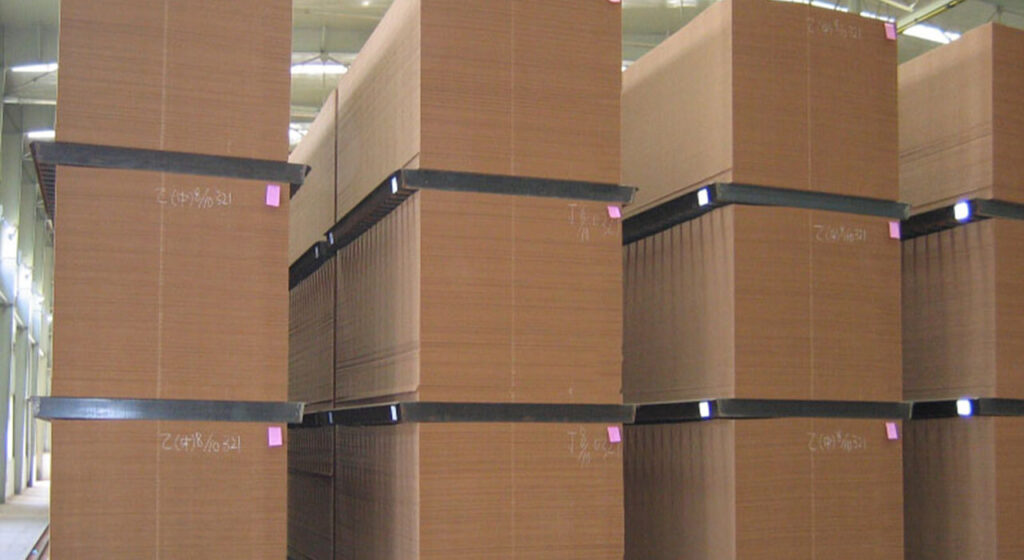
Check any duties or anti-dumping measures – some countries apply extra tariffs to fiberboard imports, so be aware of current HS-specific duties. Also arrange shipping insurance on CIF or FOB terms to cover loss/damage at sea.
Before payment and shipment, conduct a final quality inspection. Verify that each bundle of boards matches the order in size, grade, and finish.
Confirm that any labeling (grade E1, MR, etc.) is correct. As one sourcing guide advises, thorough supplier evaluations, sample checks, and third-party inspections are vital when sourcing overseas
In practice, reject any shipment where boards fail thickness, flatness, or emission standards.
8. Quality Inspection Before Shipment
Even with trusted suppliers, a pre-shipment inspection is essential. Have an inspector check the MDF bundles before loading.
Key checks:
- measure board thickness and dimensions against specifications;
- ensure flatness and smooth surfaces (no voids or deep scratches);
- use a moisture meter (<10% typically); and do a quick on-site formaldehyde test. Inspect edges for chipping and ensure coatings or laminations are uniform.
- Verify that each crate is labeled with board specs and that counts match the packing list.
In short, do not load the container until you are satisfied with the board quality. As noted, “quality assurance is a vital factor” when importing from China, so document any issues and hold final payment until resolved.
9. Logistics Tips

For smooth logistics, pack boards in sturdy bundles wrapped in plastic film. Insist on either fumigated wood pallets or steel cages to protect bundles.
Clarify payment and Incoterms up front: for example, under FOB you arrange sea freight after the supplier loads the container.
Work with your customs broker to prepare documents (invoice, packing list, B/L) and know your country’s import requirements (CE marking, formaldehyde certificates, etc.).
Keep in close contact with the forwarder and supplier to track the shipment.
10. FAQ For Buy MDF Board
How much should MDF cost?
The price of MDF varies based on thickness, density (standard vs. high-density), board dimensions, and geographic location.
As of mid-2025, a standard 4×8-foot sheet (½-inch thick) typically costs between $25 and $40.
Thicker (¾-inch) or High-Density MDF (HDF) can range from $40 to $60 per 4×8 sheet.
Specialty MDF—such as moisture-resistant or fire-rated—may reach $60–$100.
Retailers often offer volume discounts for contractors or bulk purchases.
Is MDF cheap or expensive?
MDF is generally more affordable than solid wood, hardwood plywood, or certain composite boards. Standard MDF costs less than natural plywood per square foot.
However, specialty MDF (moisture-resistant, fire-rated, ultra-smooth) can be more expensive. Overall, for furniture, cabinetry, and interior paneling where a smooth surface is valued, MDF is considered cost-effective.
Can I order MDF that is cut to size?
Yes. Most home centers and lumberyards offer cut-to-size MDF services.
You can specify exact dimensions—for instance, a 24×36-inch piece—and they will provide clean, straight cuts. Some stores charge a small cutting fee (typically $1–$5 per cut). Ordering pre-cut MDF saves time, avoids need for large saws at home, and reduces waste.
Is MDF cheaper than plywood?
Standard MDF boards are generally cheaper than plywood of comparable thickness.
For example, a ½-inch MDF sheet might cost $30, whereas a ½-inch plywood sheet of similar grade could be $45–$60. However, plywood offers superior screw-holding strength and moisture resistance. MDF has a smoother surface, making it easier to paint or veneer.
How heavy is a 4×8 sheet of MDF?
Weight depends on thickness:
- ¼-inch (6 mm): ~35–40 lbs
- ½-inch (12 mm): ~70–75 lbs
- ¾-inch (18 mm): ~110–120 lbs
Is MDF board long lasting?
MDF is durable for interior applications if properly sealed and protected from moisture. When painted or veneered and kept in a stable humidity environment, MDF can last decades without warping or delamination.
However, MDF is susceptible to water damage; prolonged exposure to damp conditions can cause swelling. For best longevity, seal all edges with primer or edge banding, and avoid ground-contact or unsealed outdoor use.
Are MDF cabinets expensive?
MDF cabinets tend to be mid-range in cost. Compared to solid wood cabinets, MDF cabinets are less expensive because MDF board is cheaper and easier to machine.
However, if the cabinets use specialty finishes (moisture-resistant MDF, high-quality paint, edge-banding, detail routing), the price can rise. In general, expect MDF cabinet boxes to cost 20–40% less than solid-wood counterparts.
Is MDF waterproof?
Standard MDF is not waterproof. It absorbs water readily, leading to swelling and edge‐blowout.
However, there are moisture-resistant MDF variants (often green or blue) treated with wax additives and resins.
These “MR MDF” boards offer improved moisture resistance but are still not fully waterproof. For true waterproof applications, consider exterior-grade plywood, marine plywood, or PVC-based boards.
Can I cut MDF at home?
Absolutely. MDF is easy to cut with standard woodworking tools:
- Circular saw (with a fine-tooth blade or carbide-tipped blade for clean edges)
- Table saw (use an MDF-specific blade to minimize tear-out)
- Jigsaw/Scroll saw (for curves; use a blade with 10–12 TPI non-skip design)
- Router (for shaping edges or rabbets)
Why is MDF not sustainable?
MDF is made from wood fibers, often derived from surplus sawmill waste rather than virgin logs, which improves sustainability. However:
-
Formaldehyde-based resins: Traditional UF (urea-formaldehyde) binders can off-gas VOCs.
-
End-of-life disposal: MDF cannot be recycled easily into new MDF; burning MDF releases toxic fumes.
-
Deforestation concerns: If wood sources are not certified, raw materials may come from unsustainable forestry.
To minimize environmental impact, look for MDF certified by the Forest Stewardship Council (FSC) and use no- or low-formaldehyde binders.
What are 5 disadvantages of MDF?
Moisture Sensitivity: Swells or warps when exposed to water.
-
Lower Structural Strength: Less screw-holding capacity than plywood; can split under heavy load if screws placed too close to edge.
-
Dust Generation: Cutting or sanding produces fine dust that can irritate respiratory system and contains formaldehyde (in some MDF).
-
Weight: Heavier than plywood; handling large sheets can be difficult.
-
Limited Outdoor Use: Not recommended for exterior applications due to vulnerability to rain and humidity.
Can you paint MDF?
Yes. MDF’s smooth, uniform surface makes it ideal for painting. Follow these steps for best results:
-
Seal Edges: Use a wood filler or MDF-specific edge sealer to prevent water absorption.
-
Prime: Apply an oil-based or shellac-based primer (to seal resin bleed) or a high-build acrylic primer.
-
Sand Lightly: After primer dries, sand with 220-grit for a silky finish.
-
Topcoat: Use water-based or oil-based enamel or latex paint; apply 2–3 coats for full coverage.
Avoid latex paint directly on raw MDF, as it can raise the grain and absorb moisture.
Can you sand MDF?
Yes. MDF sands easily due to its homogenous, fiber-based core. Use these tips:
-
Start with 120–150 grit sandpaper to smooth edges and remove any fiber fuzz.
-
Finish with 220 grit for paint-ready smoothness.
-
Vacuum often to remove fine dust; MDF dust is very fine and can clog sandpaper.
-
Edge caution: Sand gently on edges to avoid rounding corners excessively.
Always wear a dust mask or respirator when sanding to protect your lungs.
How to make MDF edges smooth?
MDF edges tend to be fuzzy after cutting. To achieve a smooth edge:
-
Sand Immediately: Use 120-grit sandpaper on a sanding block, moving along the edge to remove fibers.
-
Fill Imperfections: Apply a thin coat of MDF-specific wood filler or lightweight spackle to seam lines or minor chips.
-
Sand Again: After filler dries, use 220-grit sandpaper for a polished finish.
-
Seal or Prime: Apply primer or edge sealer to stabilize fibers before painting or veneering.
For ultra-smooth edges, consider using a router with a flush-trim bit and then sanding.
11. Conclusion
China’s massive MDF industry offers furniture manufacturers unmatched scale and cost efficiency.
By tapping into Chinese MDF production – and pairing it with the right panel processing machines (such as Bestin’s CE-certified saws, banders, and routers) – companies can produce large batches of cabinets, desks or shelving at competitive prices.
To succeed, however, be diligent: verify supplier credentials and certifications (ISO, E0/E1, FSC, etc.), demand formaldehyde and moisture test reports, and perform rigorous quality inspections before shipment.
When combined with advanced woodworking machinery, high-quality MDF board from China can help furniture manufacturers deliver durable, attractive products while cutting material costs and lead times.
With careful sourcing and execution, buying MDF from China can greatly boost production efficiency and profitability in the furniture industry.
